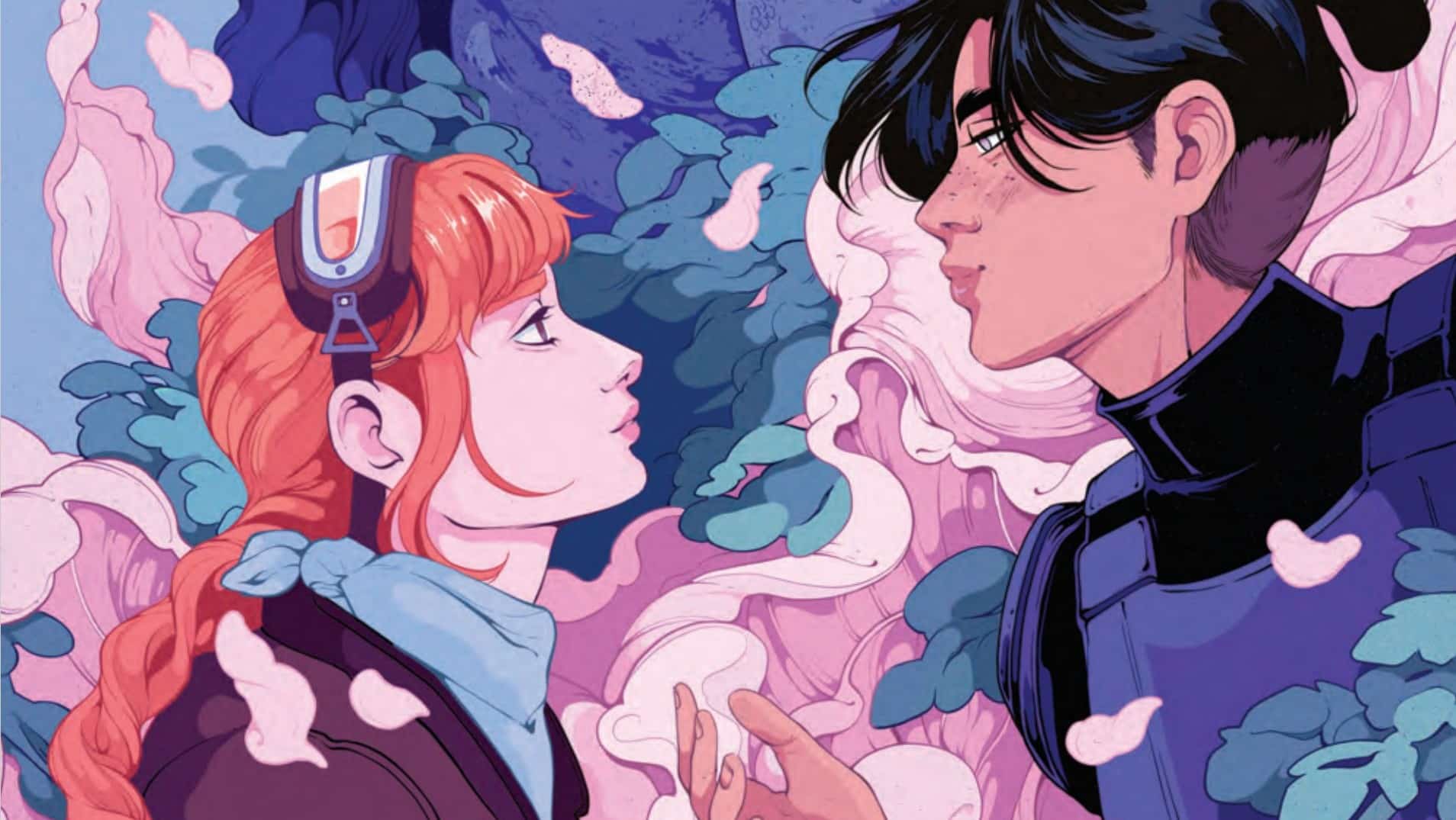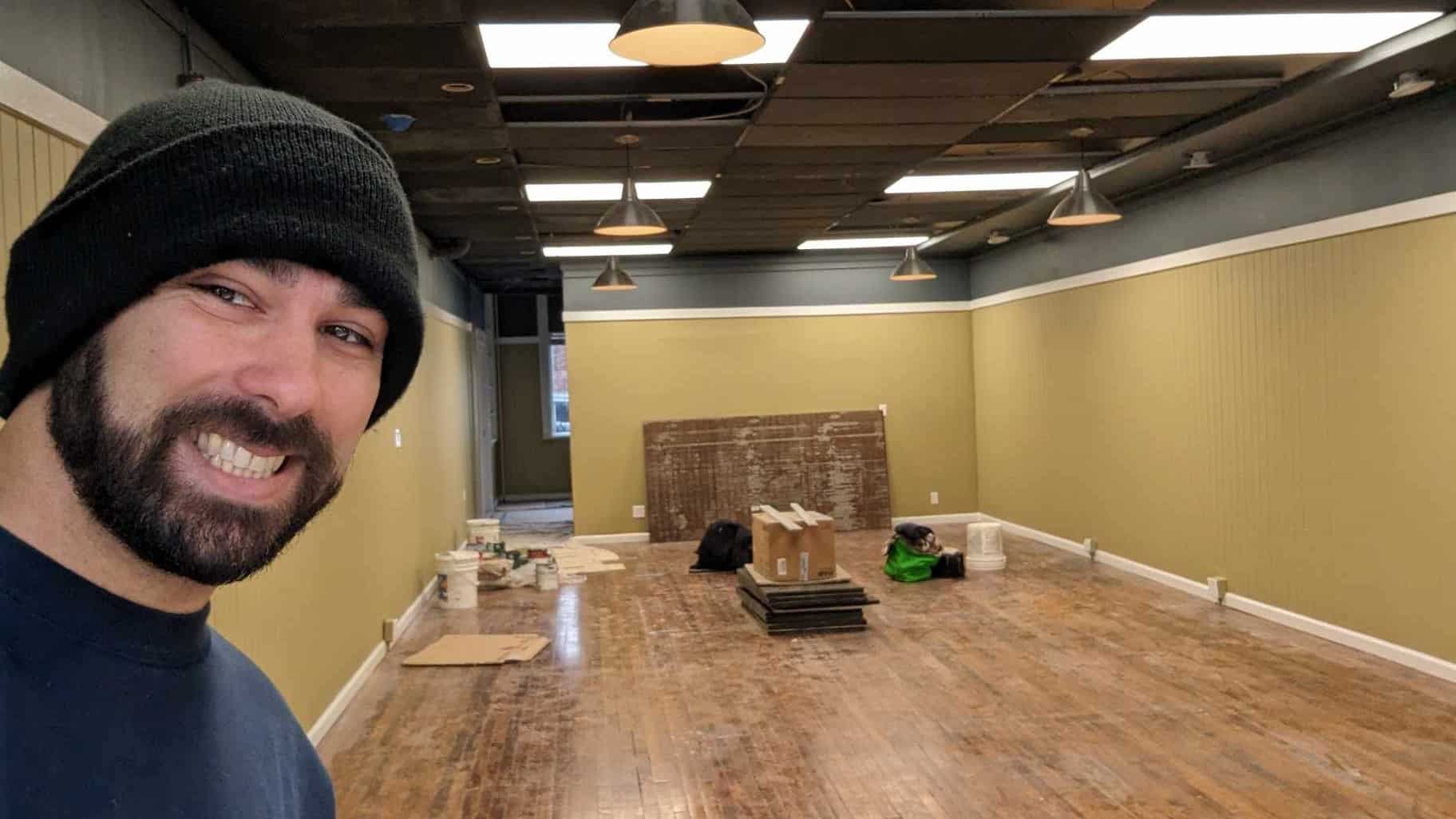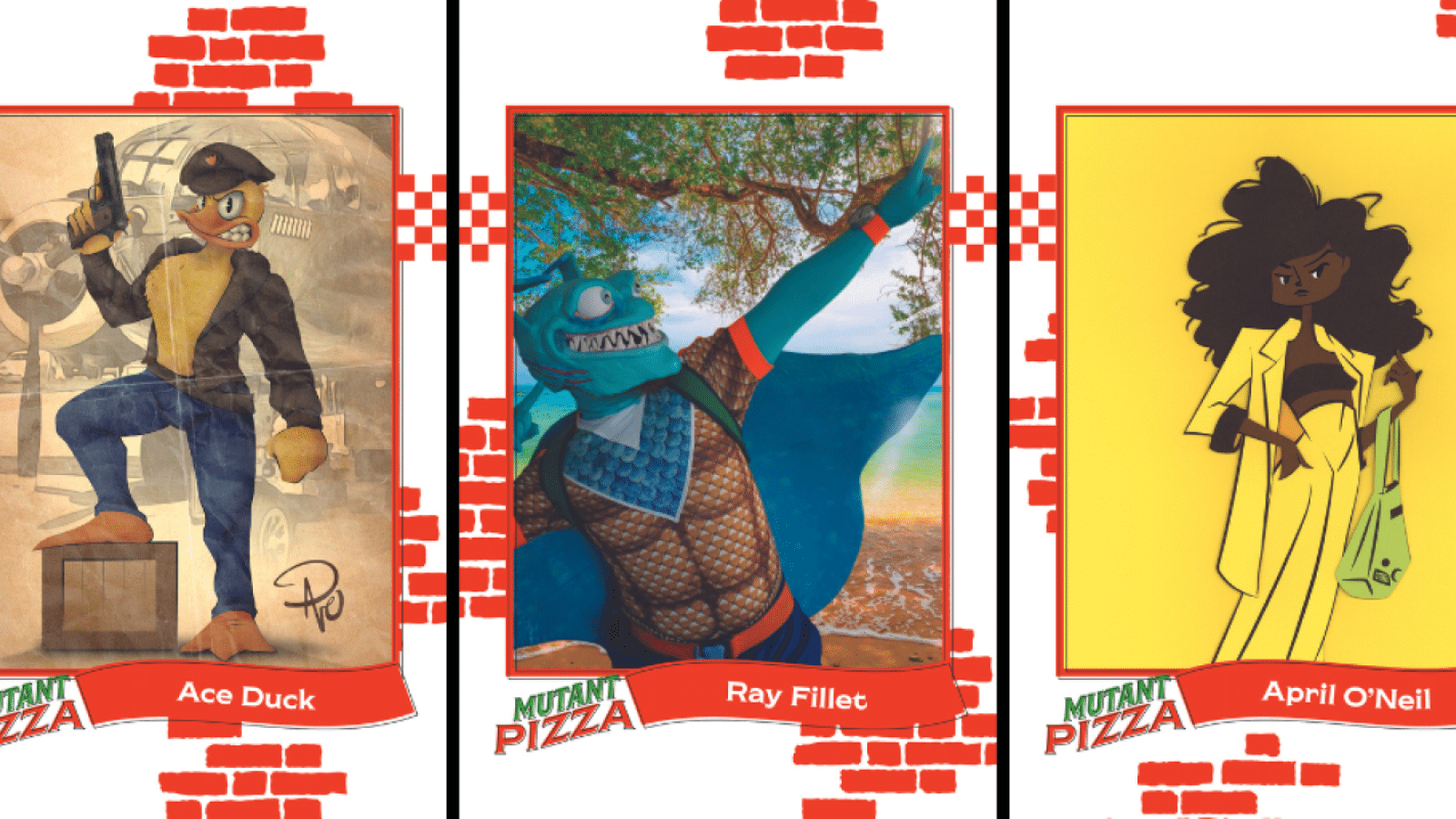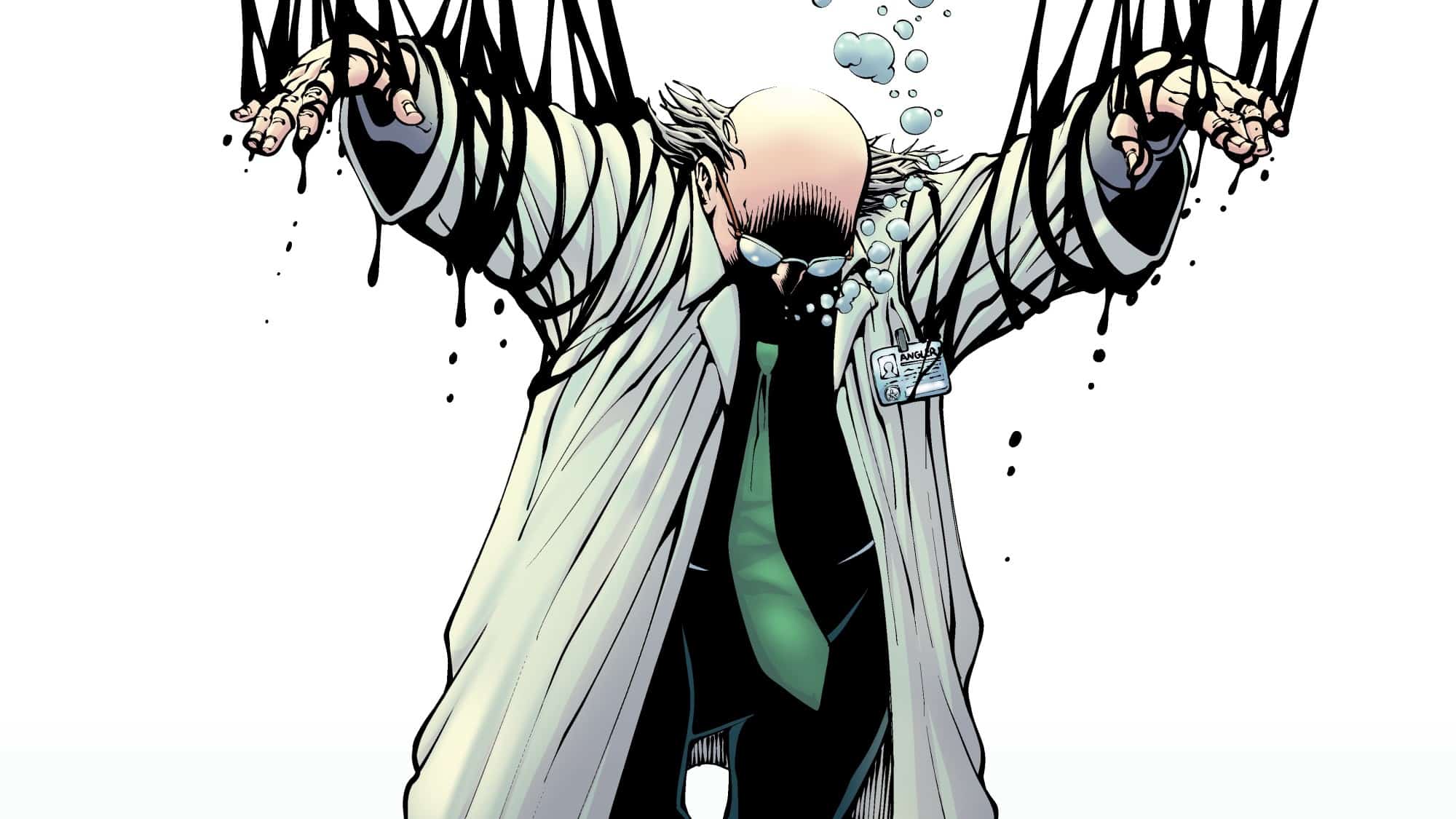One of the beautiful things about Kickstarter as a platform for comics creation is that it allows voices that are marginalized in mainstream comics to be heard. The crime genre is one that has grown considerably in recent years, but, as with much of mainstream comics, it has remained mainly white. So it’s exciting to talk about FairSquare Comics’ Noir is the New Black.
Noir is the New Black is an anthology of noir stories by Black creators. The book features an amazing list of talent, including some favorites of mine, like Gary Phillips and Shawn Martinbrough, whose Angeltown for Vertigo is a lost gem of Black noir, and recent WMQ&A guest Sanford Greene. And that’s just scratching the surface. I talked to co-editors Trowa Chris “TC” Harris and Fabrice Sapolsky about the origins of the anthology and what makes it special.

Matthew Lazorwitz: What is the elevator pitch for Noir is the New Black?
Fabrice Sapolsky: Thirteen stories from Black creators. Twenty-five-plus Black voices delivering their stories unfiltered. These creators will be paid fairly thanks to the money we’ll gather from the Kickstarter campaign. AND they keep all their rights as all content is creator-owned.
TC Harris: I feel the pitch is a rather simple one; comics for the rest of us! What does that mean? To me, that is the FairSquare Comics mission statement: to provide representation for all readers who feel that they aren’t receiving it in comics. Having a character that looks like you is important, but also having a character that understands your unique struggles is also key in creating a true inclusionary platform.
Matt: How did you get creators involved? Did you have some in mind already, did you put out a call or was it a combination of both?
TCH: That’s a little tricky, as Fabrice and I have been selecting talent from different pools. Over the years of networking, we’ve both amassed a list of people we’ve always wanted to work with. In some cases there has been overlap, with us both reaching out to some of the same people! *laughs* Ultimately, it’s really come down to those people we know, with a few discoveries along the way. At least two people actually reached out to us after seeing the Kickstarter. That was exciting!
FS: You don’t bring that many talents under one roof by just praying they’ll come. As TC said, it’s mainly about relationships. I’ve been in comics for over 20 years. I held nearly all of the positions one could within the industry. I made a ton of friends along the way and have to add that since I moved to the U.S. in 2015, life brought me closer to minority creators. As a minority myself, I found a kinship with them that enabled me to build strong friendships with some truly gifted and talented people. Some of them are in this collection. TC and I are genuine. We believe in what we’re doing here. And I think it shows (laughs).
Matt: You mention a bunch of classic noirs, both the founders of the genre, like Dashiell Hammett, and modern Black creators, like Walter Mosely, both of whose work I love. Do you have specific noir stories, either novels or films, that are influential to you?

TCH: For me, I would have to go with “The Maltese Falcon” and “Dial M For Murder” for being my personal favorites, but I am also not a slave to the classics. “Memento,” “Ricochet,” “Blade Runner,” “Kiss Kiss Bang Bang,” “L.A. Confidential,” “Mulholland Drive” all make the list for my sources of inspiration. Hell, “L.A. Noir” is probably one of the greatest love letters to the noir genre, and that was a video game! “Batman: The Long Halloween” is one of the greatest noir-driven comics I’ve ever read. It was one of the main influential pieces I’ve read that inspired me to give comic writing a shot.
FS: Hammett, Spillane, Ellroy, Leonard, these were my go-to authors growing up. Come on, I came up with Spider-Man Noir! They all influenced me in some way. More recently, and specifically for Black noir, I’d go with movies like “New Jack City,” “Deep Cover,” “One False Move,” “Training Day.” There are so many. I loved “Kiss Kiss Bang Bang” too and all the classics TC mentioned above, “The Third Man” in particular. I have to admit “Blade Runner” left me cold for a long time, but with the latest director’s cut, I finally gave in. I consider noir stories universal. They don’t belong to a single time period or place. In the comics world, everyone who knows me knows how much Frank Miller’s work had an influence on my work.
Matt: What does the perspective of Black creators bring to the noir genre?
TCH: Having spent an extensive amount of time in Baltimore, the one question people visiting Baltimore ask is, “Is it like ‘The Wire?’” I found that question to be rather annoying after a while, until I really thought about the impact that the show made within the lexicon of American television. If anything, it showed how powerful the genre can be with a primarily Black focus, making the logical jump to this project even easier for me. I think the best perspective Black creators can bring to a project of this scale is simply their personal lives. Most of us have been living our own personal noir genres our whole lives. I know I have! Corruption, violence, greed and tragedy have all been tentpoles of the Black experience for as far back as I can remember. Using a Black hero/anti-hero to propel a narrative should be one of the easiest things for our creators to conceive, making for what will likely be very impactful stories. The world will get a glimpse into our world and view life through a lens that’s not often provided to them within the mainstream industry.

Matt: Among the upper tiers of pledges is a “Noirtist Edition” which not only has bonus pages but is presented in black and white. What was the thought process for the black-and-white edition being the bonus, special one?
FS: So the Noirtist Edition is a selection of stories from the anthology that we’ll select and publish in black and white with some additional material like sketches and stuff that we can’t really publish in the book. We anticipated that as we went on, more creators would want to join. We have this beautiful tool for that. Plus, let’s face it, a collector’s item serving as the perfect noir companion for the graphic novel, what’s wrong with that?
Matt: This isn’t FairSquare Comics’ first Kickstarter; you recently successfully funded a trade of One-Hit Wonder. What did you learn from that campaign, and what advice would you give to other creators thinking about crowdfunding?
FS: I had to unlearn first! Last year, I ran the One-Hit Wonder campaign, based on my experience from the Intertwined graphic novel campaign from 2016. And I failed. It was shocking. I thought I could pull it off; it didn’t work. It was like preaching in the desert. Then, after talking to a few friends, I understood what changed, and it wasn’t me. It was the world. There are so many projects, so many comics out there. There’s a lot of white noise. So when it came time to restart One-Hit Wonder, in January 2020, I opted for a short campaign, 15 days, and I made it about me. My successes. My failures. My personality. And I reached my goal in three days. That’s what I learned. Creators are more important than brands. It was not only a lesson for One-Hit Wonder (the graphic novel is now available for everyone to purchase on www.fairsquarecomics.com/store, by the way), but it required a complete reinvention of the FairSquare Comics model. This is where “comics for the rest of us” started. This is where I started signing all my posts with the #CreatorsBeforeBrands hashtag. This is when TC and myself started talking about projects together.
I don’t know if I have any advice for creators. Just like creator-owned, crowdfunding isn’t for everybody. You need to be seriously motivated. Emotionally, it’s a roller coaster. It’s hard. It’s stressful. But wait … it’s beautiful. And as COVID-19 disrupted pretty much everything, crowdfunding became THE ultimate vector to make creators’ voices heard. Honestly, it opened a lot of opportunities. And TC, myself and all the amazing creators we’re partnering with are going to deep-dive into this brand new world. We can now speak directly with our audiences. No filter. We can deliver content the way we really want it. We don’t have to bend to any shape or form. It helps bring our visions to the world. For Noir Is the New Black, that’s Black visions. But our next Kickstarter is completely different. FairSquare Comics has 17 projects for the next three years. I bet you’ll like more than one. Because we’re bringing quality at every level. We’re honest with our partners. Honest with ourselves. As I often say … Comics Are Life. That’s definitely ours!
Want to back this project? Check out Noir is the New Black on Kickstarter.
Matt Lazorwitz read his first comic at the age of five. It was Who's Who in the DC Universe #2, featuring characters whose names begin with B, which explains so much about his Batman obsession. He writes about comics he loves, and co-hosts the creator interview podcast WMQ&A with Dan Grote.






